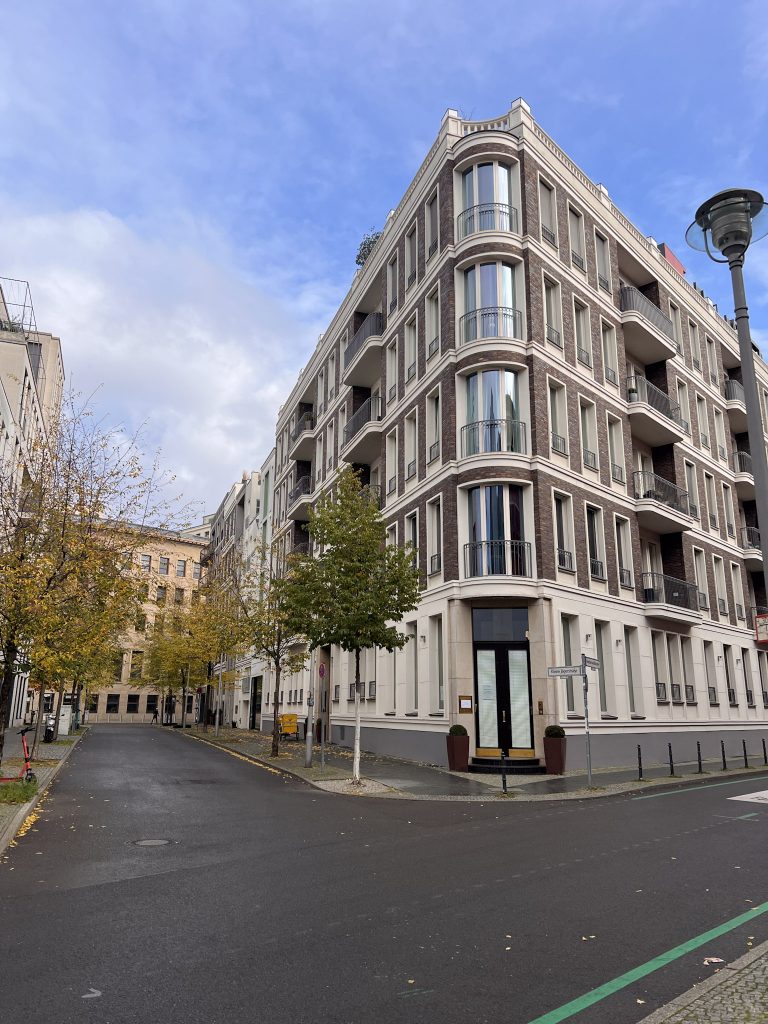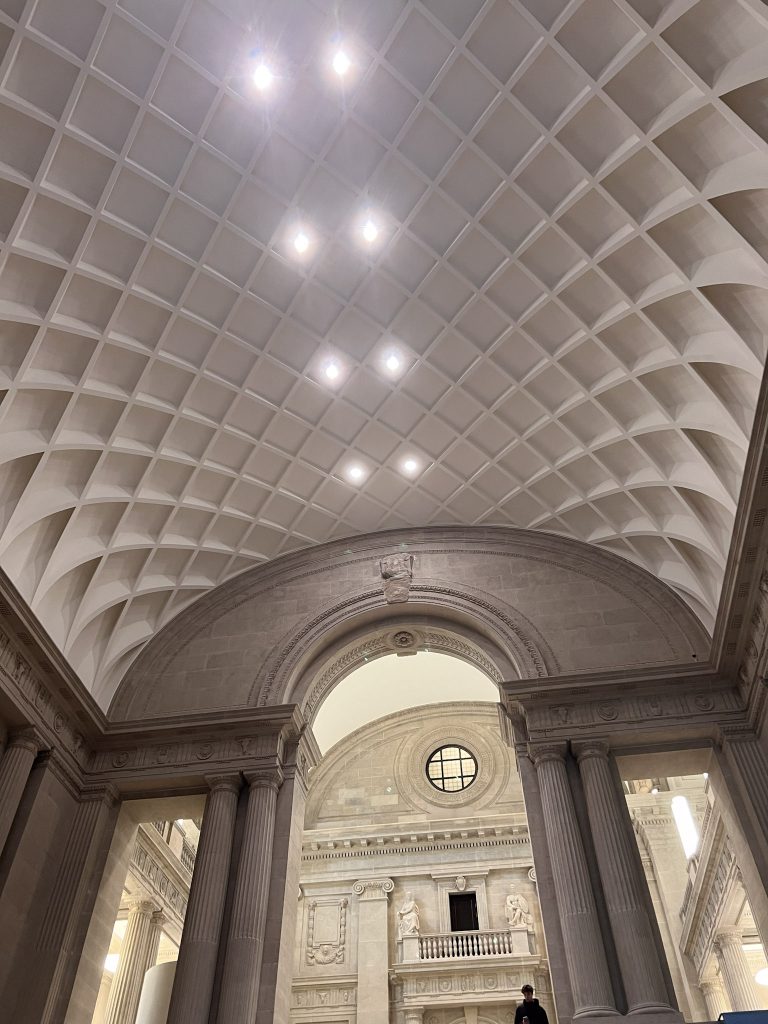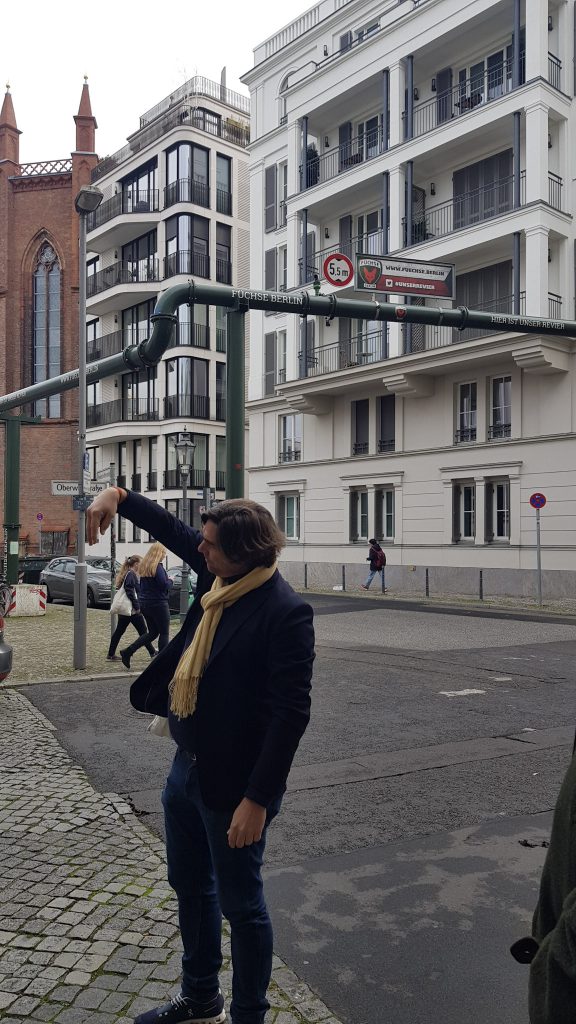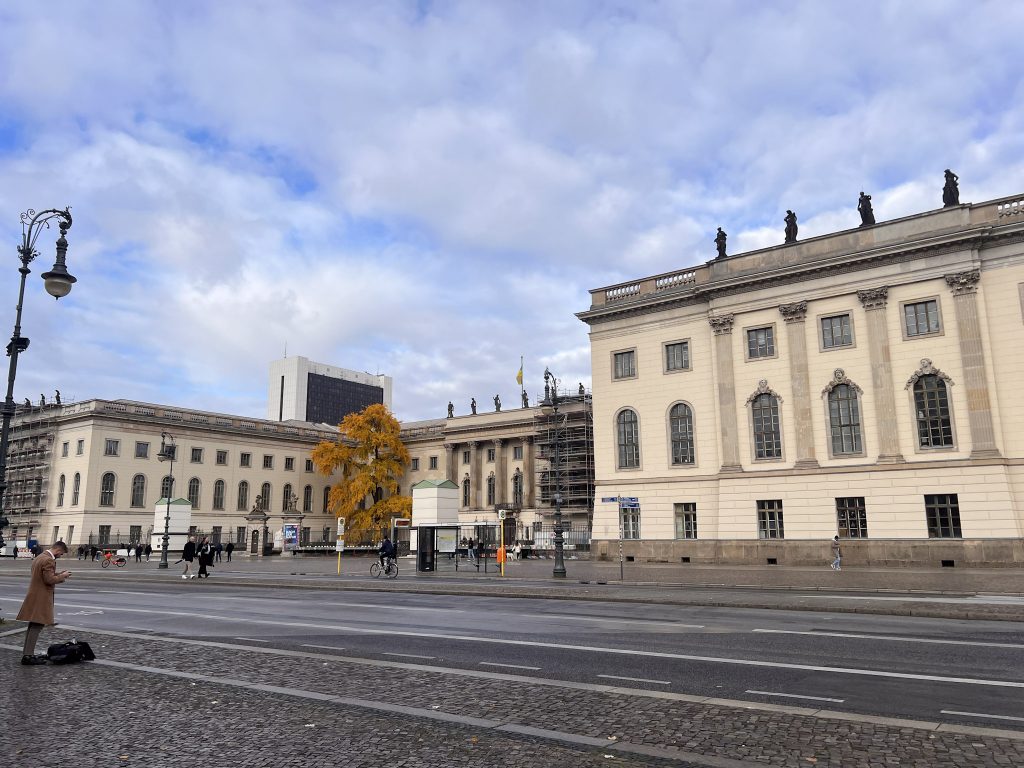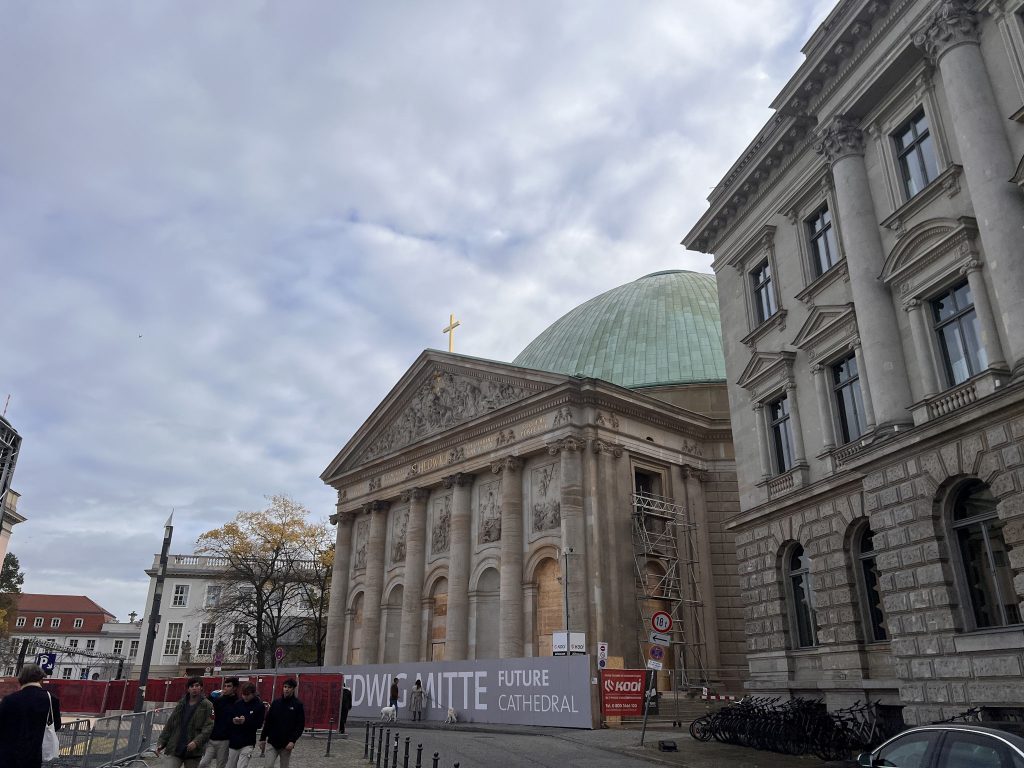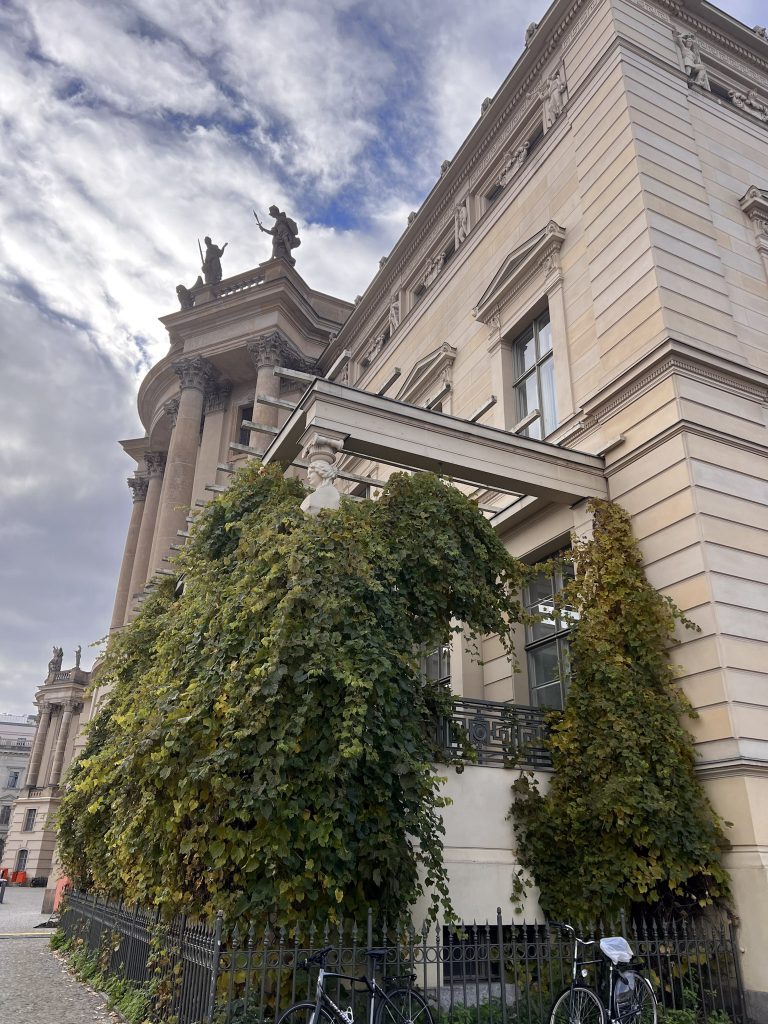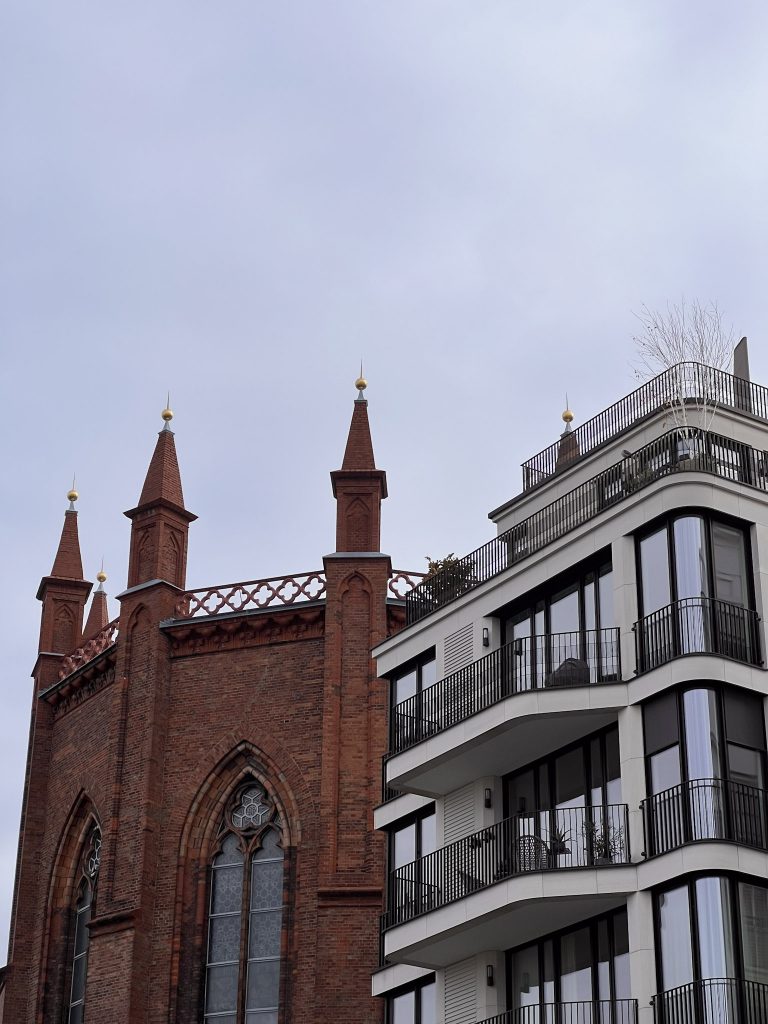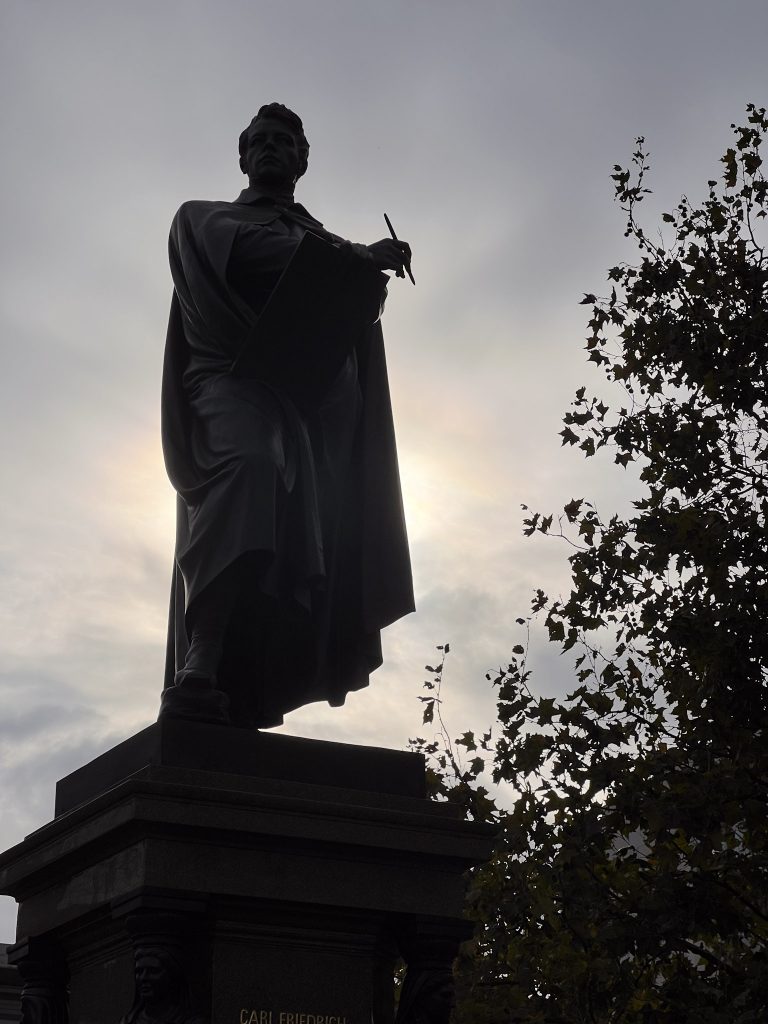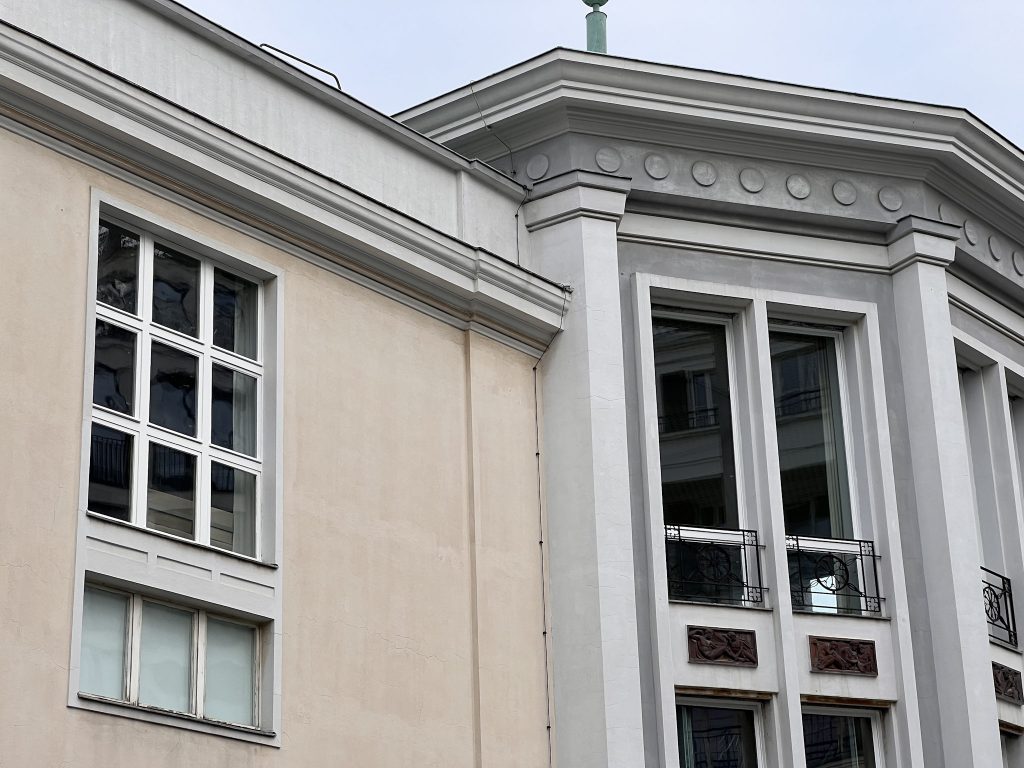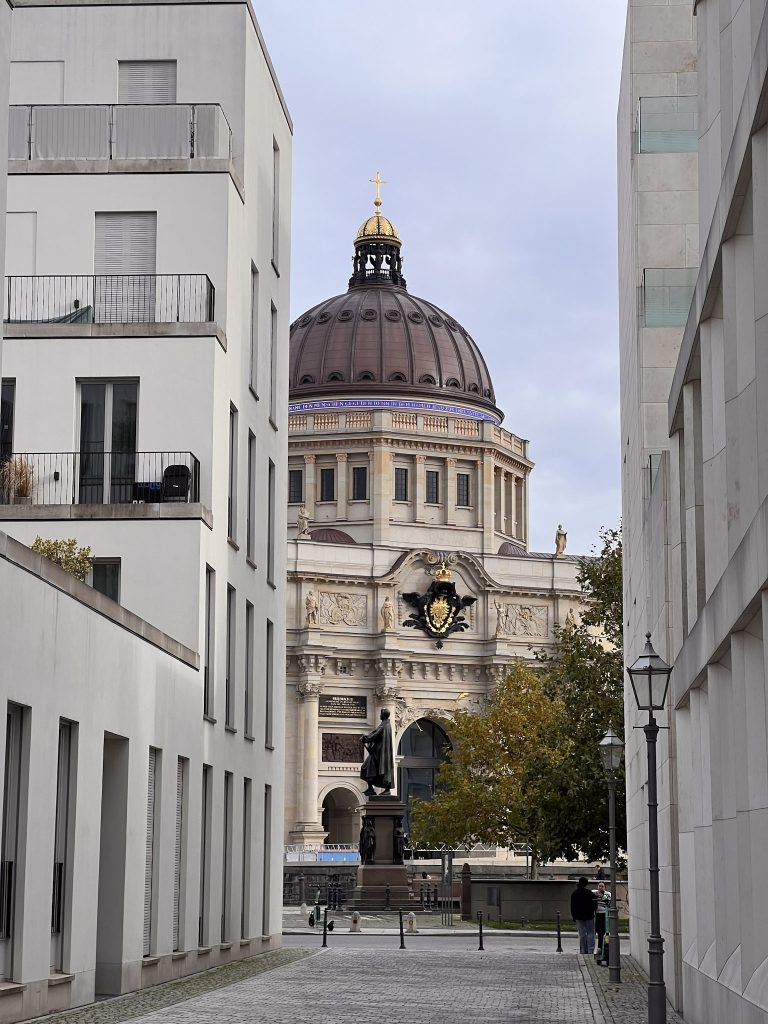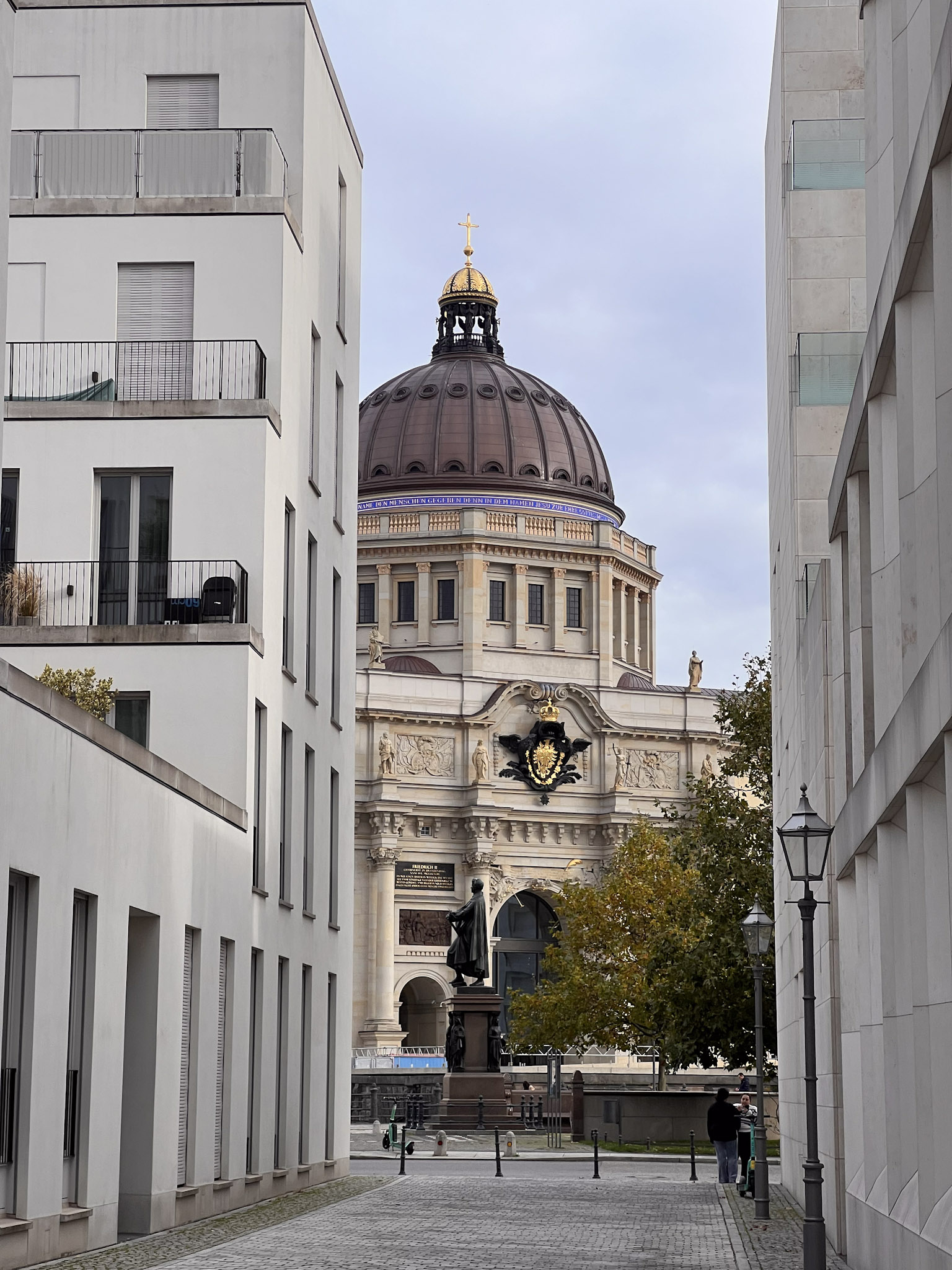This blog post is part of the ArchitecTour series, a series of blog posts chronicling the INTBAU Germany chapter’s architectural walks in search of classical architecture, both old and new. It is written by Michelle Sofge and Bart Urban.
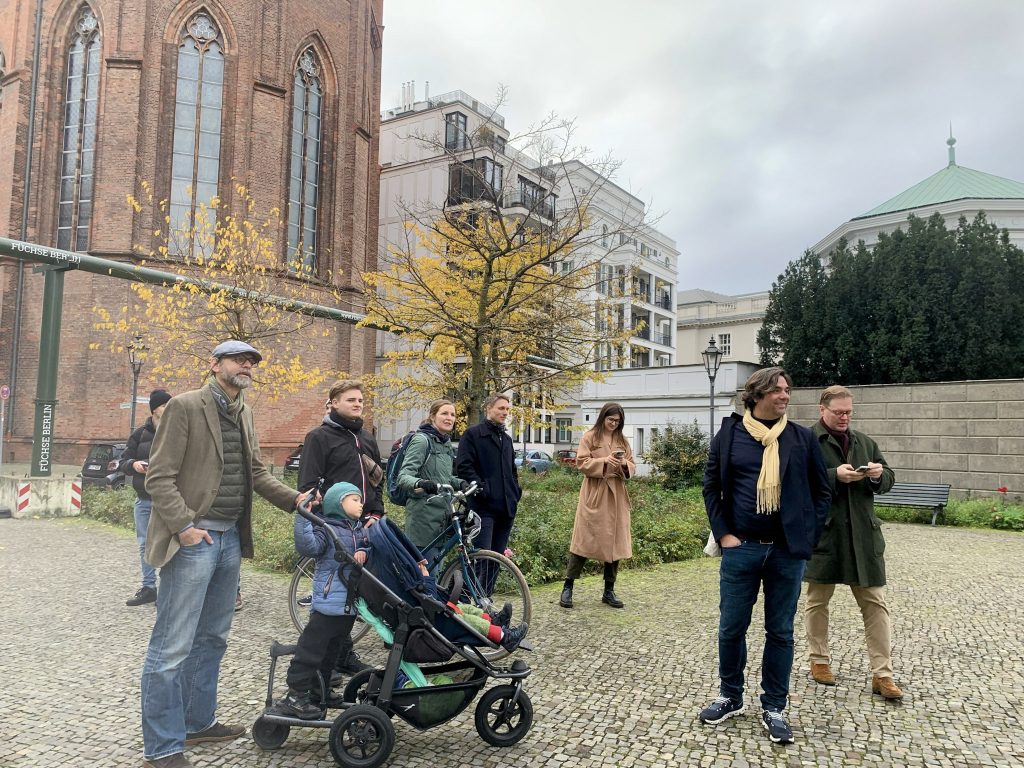
INTBAU Germany did it again! This time with a tour led by Robert Patzschke of Patzschke & Partner Architekten, the Berlin firm known for its designs using a classical-inspired architectural language. Founded in 1968 by twins Jürgen and Rüdiger Patzschke when modernism still held sway and went almost entirely unchallenged, the Patzschke architecture office has always been committed to the enhancement and beautification of the built environment beyond its basic function. The firm adheres to a language that is interpreting and adapting the proven, time-tested canon of classical architectural forms. The Patzschke touch is in this way recognizable in the delicate balancing act its buildings express: while rooted in well-established forms, the buildings are also unmistakably of the present.
The tour through Berlin’s historical centre in Mitte, which departed from Bebelplatz and snaked its way toward Hausvogteiplatz, focused on the various ways in which buildings can be built using classical design principles, drawing on centuries of tradition and know-how, while still meeting today’s needs. In other words, designing new classical buildings today goes way beyond copying what works: the art lies in mining the past and applying it in the right way to the present.
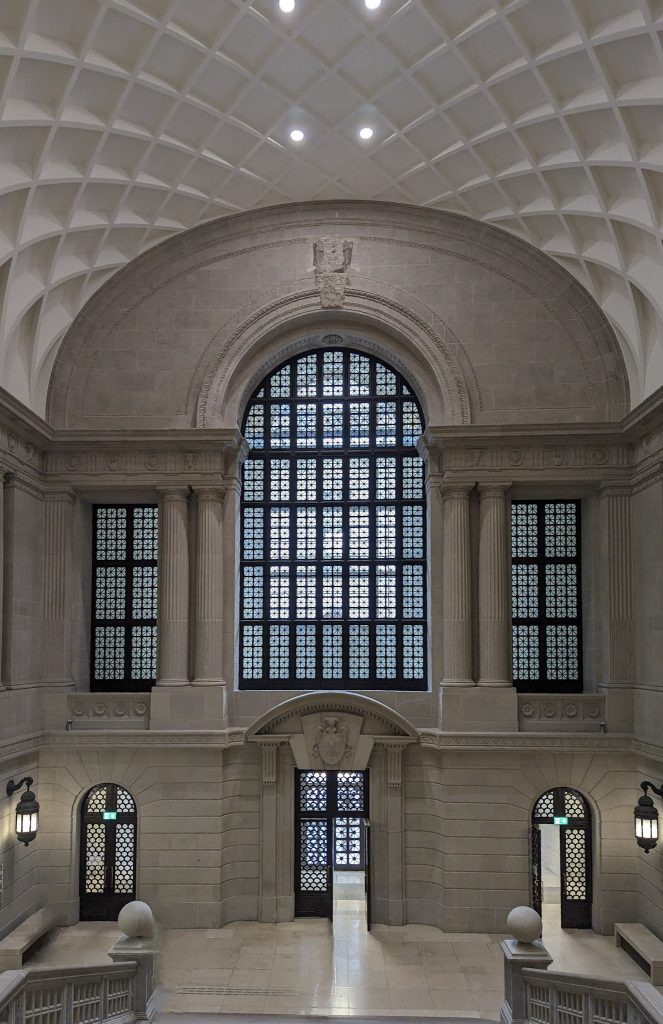
Indeed Patzschke & Partner Architekten are particularly well-known for their historically sensitive rebuilding of the Grand Hotel Adlon, adjacent to the famed Brandenburg Gate. The original and legendary Hotel Adlon was completed in 1907 and mostly destroyed in a fire in May 1945: shortly following reunification, Patzschke & Partner were commissioned to work on the site on Pariser Platz, which had been left a veritable wasteland following the destruction of both the Second World War and the GDR.
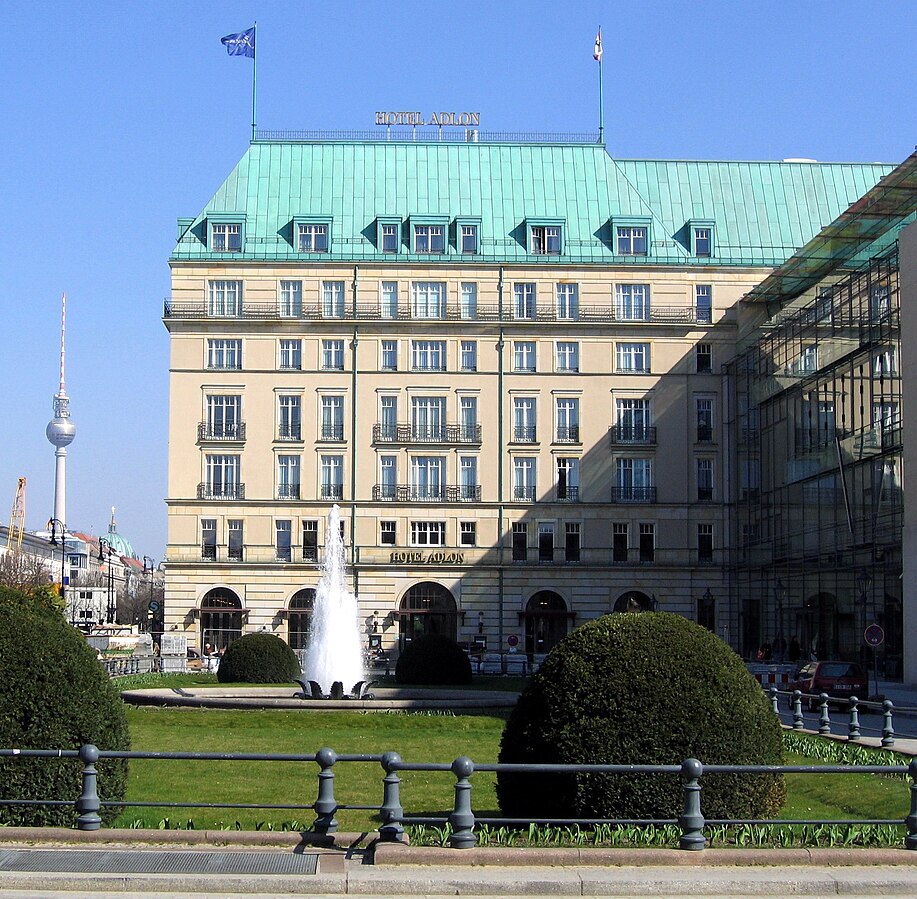
The hotel project finished in 1997 based on the historical model was a milestone in the public awareness of and appreciation for new classical architecture. The building is decidedly not a replica of the destroyed original: though based on the previous structure, the current building proudly exhibits the fact that it is a contemporary, newly built structure. Though the building was criticised in architectural circles for its ‘historicizing’ architecture, public opinion was very favourable from the beginning, and today indeed the hotel maintains its grandeur and presence and is a fitting, established neighbour for the Brandenburg Gate, while other once ‘fashionable’ buildings on the same square did not age that well.
The newly built Hotel Adlon was in this way a critical chapter in the story of Berlin’s post war building story: though some architectural ‘elites’ were initially hostile, the building inspired a new awareness of – and demand for – traditional building and urbanism. Specifically, it inspired an appreciation for the kind of structures encountered on the walk. Tour participants were particularly pleased to see contemporary classical architecture built in the center of Berlin, after decades of wrong turns and failed architectural experiments.
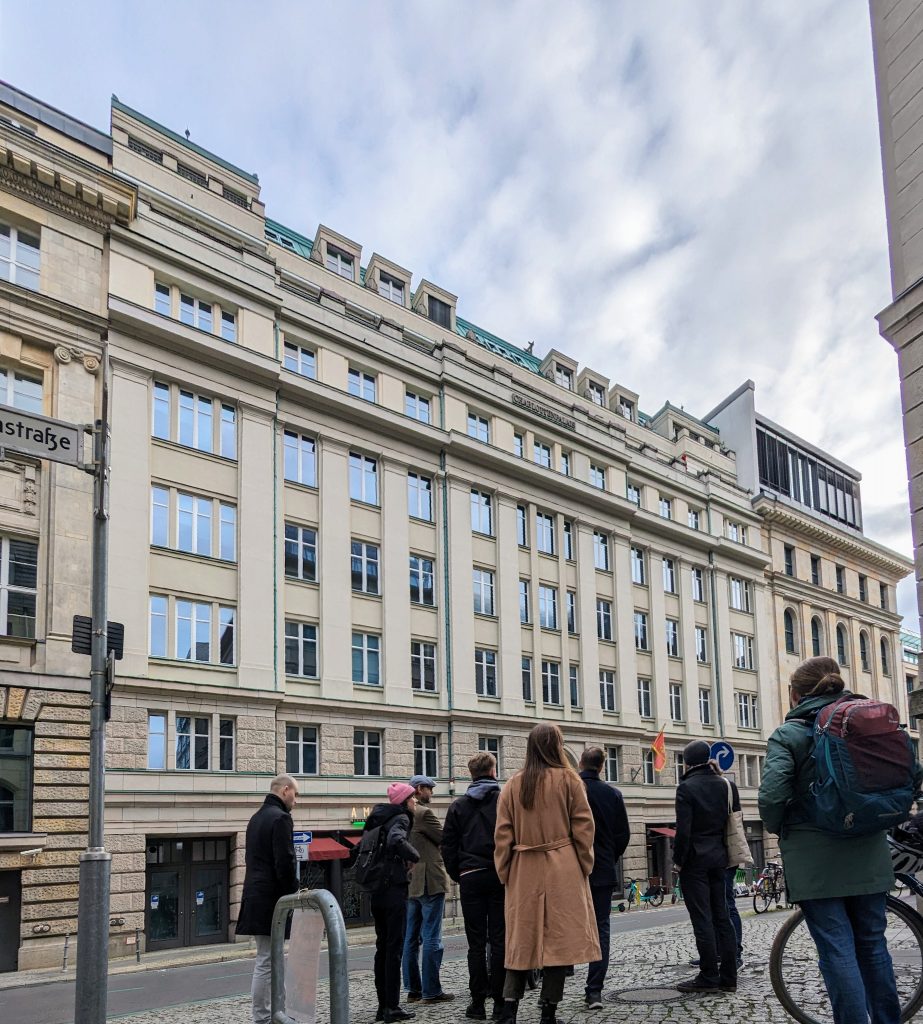
Patzschke & Partner Architekten have themselves contributed approximately 35 buildings to Berlin’s central areas, and in this way, notes Robert Patzschke, “we are trying to do our small part to repair and re-beautify the city”. He noted as well that today there are other architectural firms similarly “following classical and traditional design principles in various forms, complexities and concreteness”, resulting in the ever-increasing number of streets that present what he described as a “successful renewed cityscape”. Thanks to the work of these firms, today we can enjoy new buildings in the center of Berlin that are more than just glass boxes and that are rooted, rather, in centuries of architectural wisdom and attractiveness.
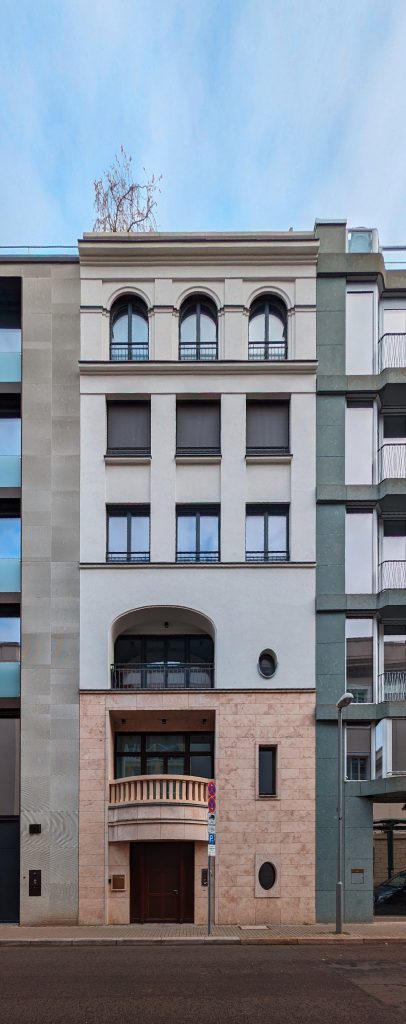
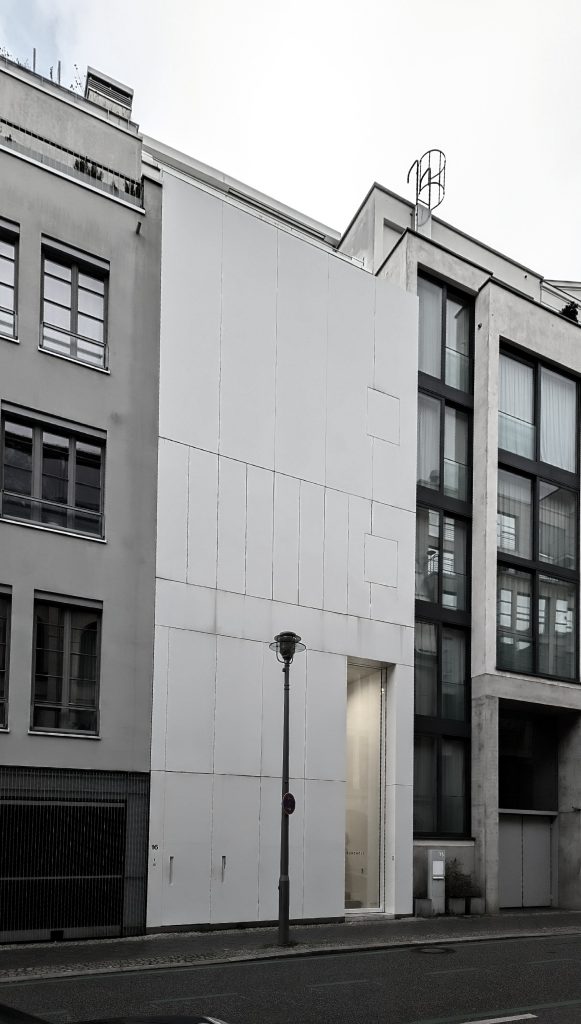
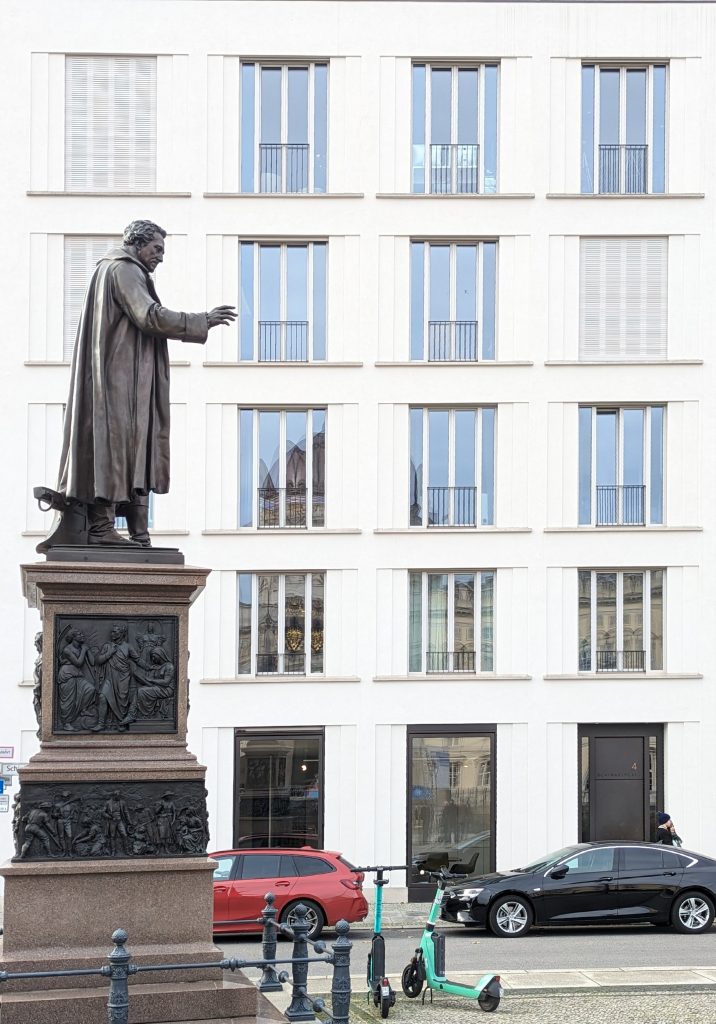
Also, with ongoing debates about the further development of Berlin’s former old town area in the Klosterviertel (near Parochialkirche), it became clear in recent years that most Berliners want a new direction in the building policies of their city, which is also exemplified in surveys and polls. They show a clear preference of 65% up to 90% for reconstructions (like Schinkel’s Building Academy) as well as a desire for more aesthetic architecture that pays attention to historical and regional nods of building design.
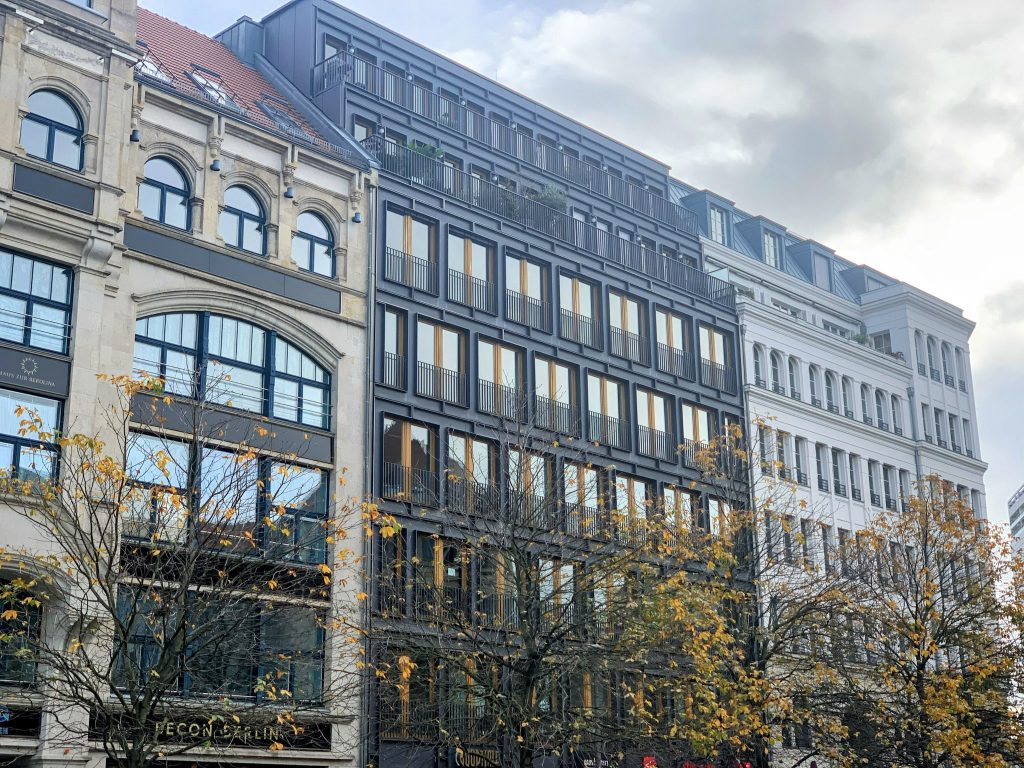
One of the points discussed on the walk was the affordability, profitability and marketability of new classical buildings. It should be a simple analysis, as buildings preferred by the public would naturally be in high-demand and therefore profitable. And indeed, that is the case: traditional new buildings, though much preferred by the public, are still relatively low in supply, and there is therefore increasing market demand, as rental pressure on historical quarters also increases. Developers, however, are gradually starting to understand the long-term potential these buildings have, and are thankfully slowly coming around. And the more developers pick this up and build classical-inspired again, the more affordable it becomes. The participants expressed their hopes that this trend continues.
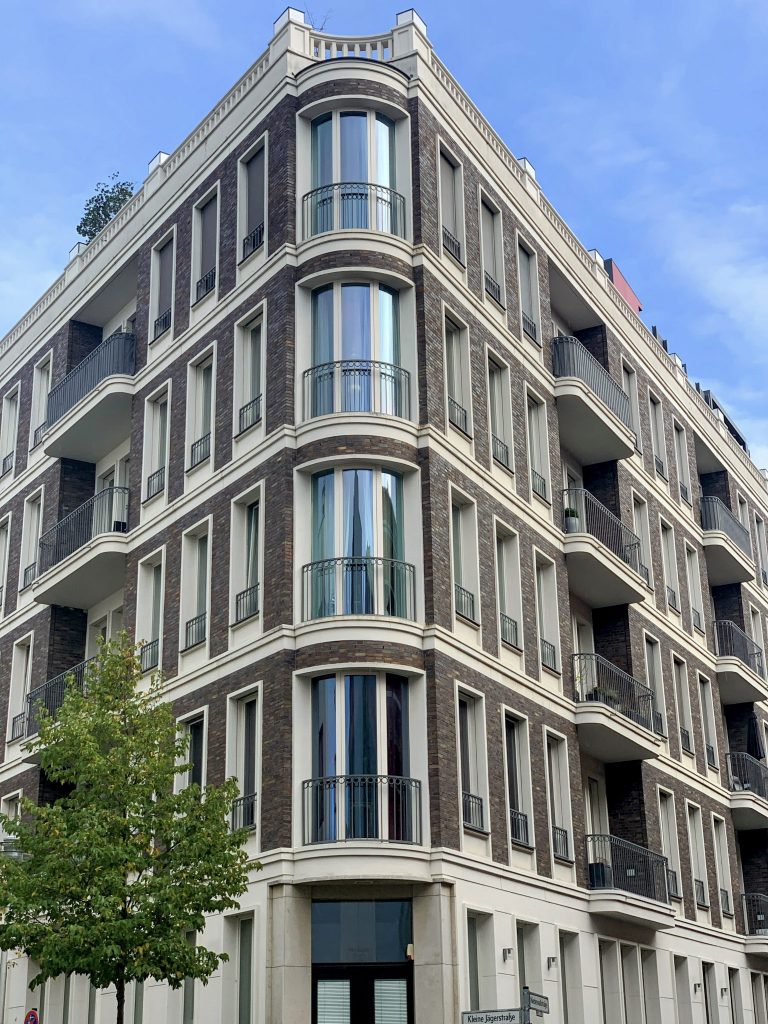
The fact that beautiful, traditional architecture is increasingly popular among the broader public was also reflected in the composition of the tour participants. Robert Patzschke pointed out that he was particularly struck by the demographic composition of the tour, which included not only a good balance of women and men from various countries, but also a surprising number of young participants. As he noted, this “defies the general assumption that it is conservative old white men that like traditional architecture, on the contrary”. Indeed, it seems to be that all people, young and old, prefer classical over modernism in their built environment. Tobias, a young architecture student sums it up this way: “Meeting people on the same wavelength was great, as we could discuss many aspects of architecture and urban planning with a focus on beauty, rather than architectural buzzwords. I want to join the ArchitecTour again!”
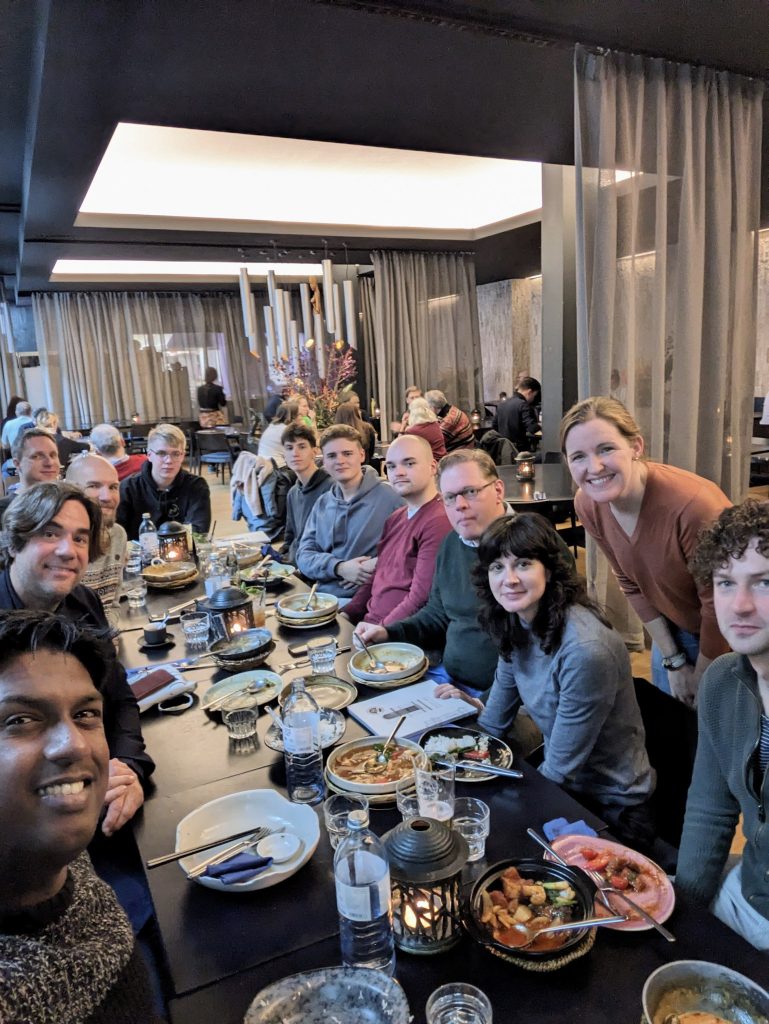
Join INTBAU Germany for their next ArchitecTour
Bart Urban, who co-organised the tour, notes that INTBAU Germany offers next a tour of new buildings in Potsdam, that new and former participants can look forward to (on 2nd of March, 2024). Additional tours are considered for Berlin-Kreuzberg, Berlin-Schöneberg, Düsseldorf and Hamburg (also open for suggestions). For anyone interested, subscribe to the INTBAU Germany newsletter or email us at: intbau.germany@gmail.com
If you now feel inspired for a tour of new classical buildings, visit Atlas on NewTrad.org to find locations in your town. You can explore on your own or invite people from your network.
Photo Gallery
